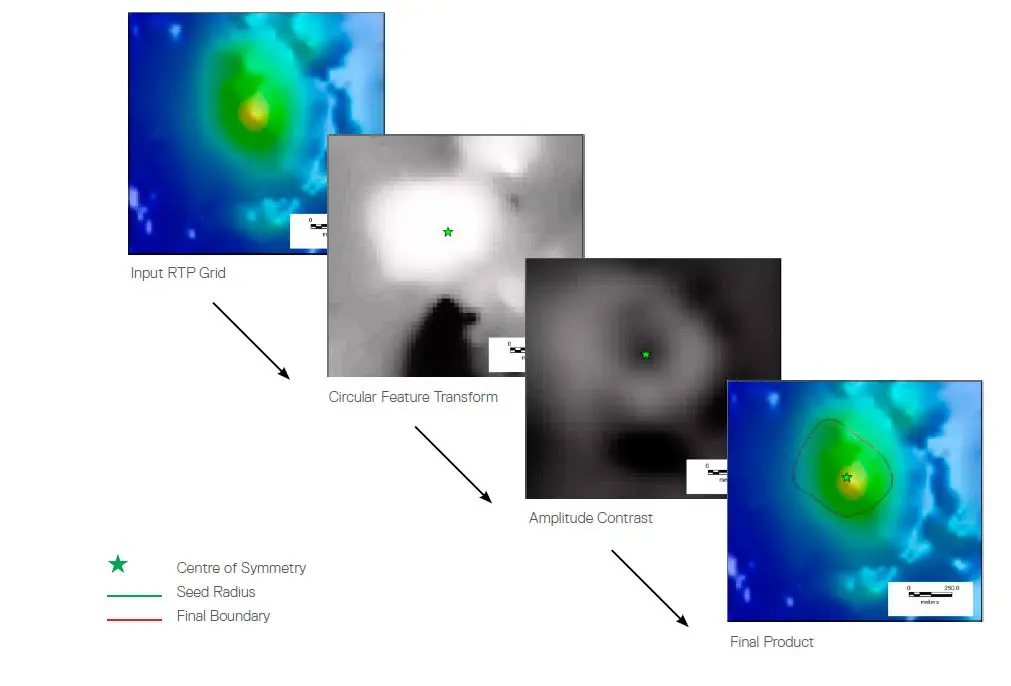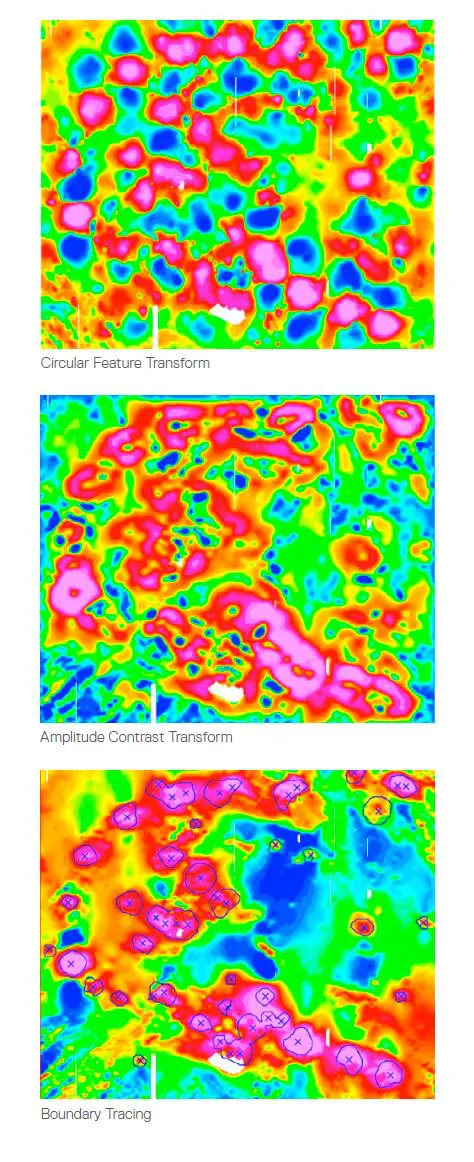The new extension for CET Porphyry Detection was specifically designed to locate porphyry magnetic signatures. Hydrothermal alteration associated with porphyry-style mineralisation typically comprises concentric nearcircular alteration zones surrounding a roughly circular central intrusion. The intrusion itself and the proximal alteration zone is usually associated with positive magnetic anomalies whilst the outer alteration zones are much less magnetic. Because the country rocks are usually magnetic, this pattern of alteration produces a central magnetic ‘high’ surrounded by an annular magnetic ‘low’.
This detection method locates and outlines sub-circular zonation patterns in the magnetic data that are associated with the central intrusion and inner alteration zone of the porphyry system. Specifically, it uses a circular feature detection method to locate sub-circular anomalies. Next, their boundaries are traced using deformable splines that are drawn to the locations of maximum contrast between the amplitudes of the central ‘high’ and surrounding area of lower magnetisation.
While it is most useful in detecting copper (Cu) and gold (Au) porphyries in covered or magnetic terrains, it is a generic tool that is suitable for other circular feature identification.

